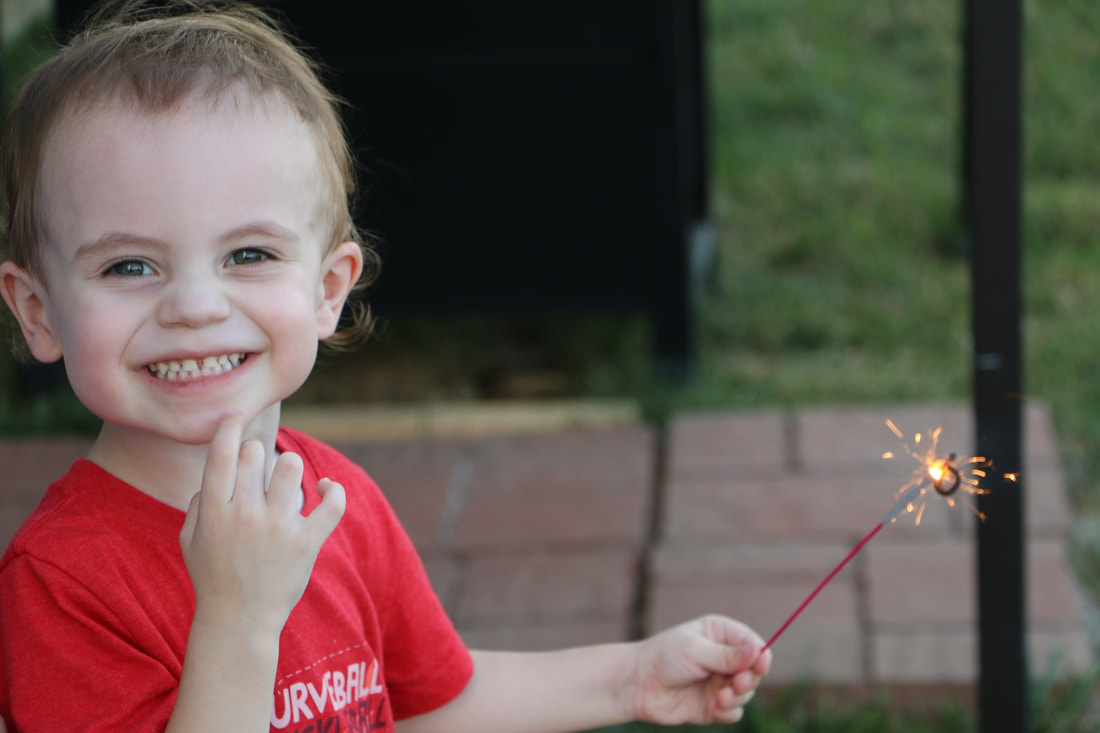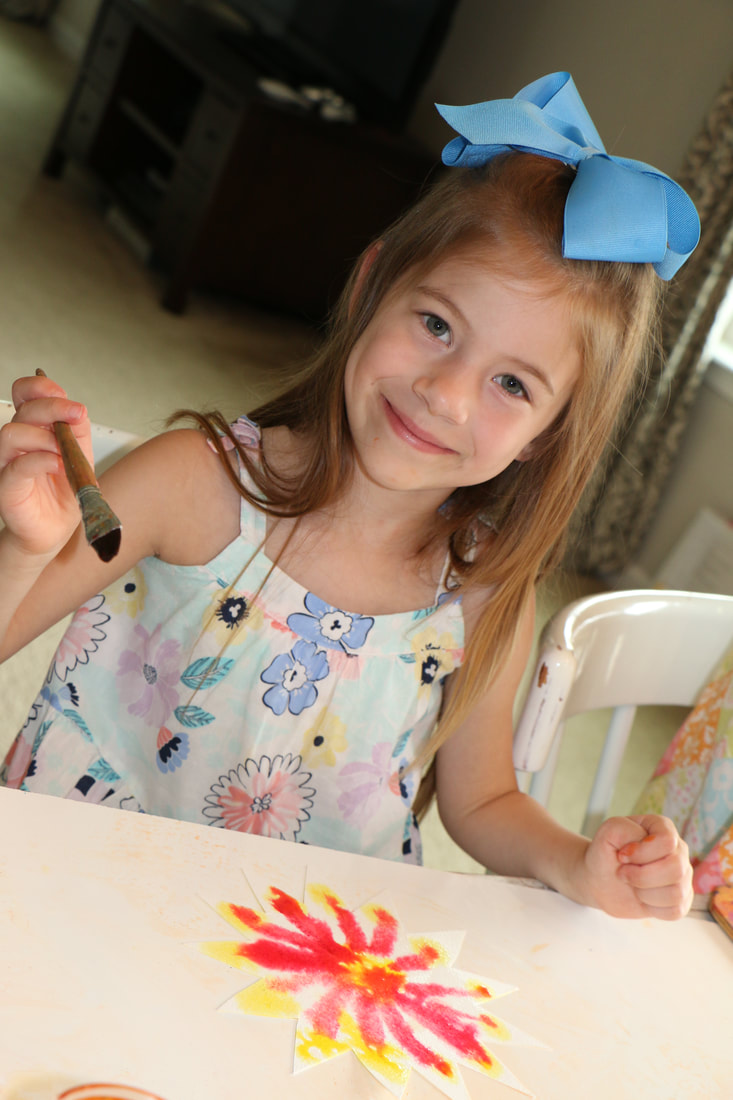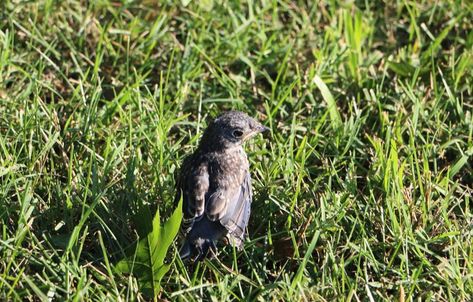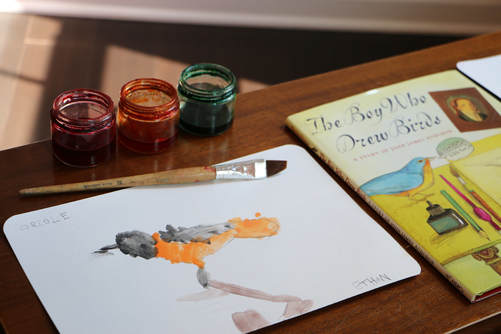|
I believe the true aim of education is to order the affections of our children. It is to teach our children to love truth, goodness, and beauty. How do we order the affections of our children each and every day as we learn together in our homeschool? The answer is in the ancient practice of schole! Schole is the Greek word for leisure. It is the origin of the Latin word "scola" and the English word "school". Schole is restful learning. It is the life-giving pursuit of knowledge. It is the pursuit of truth, beauty, and goodness in a slow and contemplative way. It is undistracted time to study and think deeply about worthwhile things. Schole is the classical ideal of education. To me, Raphael's "School of Athens" fresco is the perfect example of schole. It is the perfect example of restful learning. It is my homeschooling inspiration. When I look at this fresco, I am reminded that learning should be restful. It should be slow and deep. It should be about discovering and delighting in God's truth, goodness, and beauty. It shows me that we need to take the time to slow down and savor our learning. We need to take the time to dig in deeper. After all, how are we going to truly know and love anything if we just rush by it? If we want our children to know and love God and His creation, then we must let them linger in His truth, goodness, and beauty. We cannot just rush through to get it done and check it off our list. In this fresco, I see the kind of learning I want my children to experience each and every day. I see gathering together. I see reading. I see contemplation. I see deep thinking. I see creation. I see an unhurried, relaxed, and restful learning. It is this restful learning that I am trying to give my family... So, how do we actually do this? How can we put schole into our homeschools? How can we make restful learning our top priority? Here are a few principles to guide us...
Here are a few practical ideas to implement...
"Finally, brothers and sisters, whatever is true, whatever is noble, whatever is right, whatever is pure, whatever is lovely, whatever is admirable--if anything is excellent or praiseworthy--think about such things."
~Philippians 4:8
0 Comments
Art study is all about teaching our children to appreciate, know, and love art. Charlotte Mason says: "We cannot measure the influence that one or another artist has upon the child's sense of beauty, upon his power of seeing, as in a picture, the common sights of life; he is enriched more than we know in having really looked at even a single picture". You can give your children a deep and rich study of the great artists and their art in just 15 minutes once a week. Here is how we do it. We study one great artist for 8 to 9 weeks. The first week's study is spent reading a story about the artist, narrating back what we read, and entering that artist into our Book of Centuries. Each week after, we look closely at a different painting done by that artist. We follow this order each time:
We love Simply Charlotte Mason's Picture Study Portfolios by Emily Kiser. It is all we have ever used and all we ever need to do a successful art study each week. In each portfolio, you get 8 beautiful, high quality, thick and glossy art prints by the artist. You get a living biography story to read aloud and introduce your children to the artist. You also get a guide to picture study with step-by-step instructions, information about each picture, and "leading thoughts" or questions to guide your discussion. So, you do not have to be an art expert to lead your children in art studies.
I have noticed so many beautiful things happen in our home and homeschool since we started our weekly art study. My children find so much pleasure in great art now. We get excited together about art. We were able to visit the National Gallery of Art in Washington D.C. this past spring, and while we were there, we saw many of the original works done by the artist's we had studied. Finding works of art by artists we were familiar with was like finding old friends. We were able to have big conversations about the art and artists like we would have never been able to before our art studies. Through our art study, we have become joyfully familiar with great artists and their art. We have grown in appreciation of, knowledge of, and love of art. Adding art to each day can be one of the simplest and most beautiful ways to help order the affections of our children. We all know that there are so many benefits to giving our children the opportunity to express themselves with art. Being creative and encouraging creativity each day is a wonderful thing. When we give our children time to create, we are, in a way, celebrating God's creativity. God is the ultimate creator, and we were made in his image. So we should place a very high value on creativity and art. But how can we do art each day when we have so many other subjects to teach our children? Our days get full so quickly! Plus, art often seems so time consuming and messy. What can we do about that? Let's take a look at three practices that can help us make art simple, doable, and not so messy, so that we can celebrate creativity each day... 1, Incorporate art into the lessons you are already doing. 2. Stick to a few favorites. 3. Simplify your art materials. 1. Incorporate art into the lessons you are already doing. Do art while you read aloud. During Morning Time, I read aloud from a classic book to my children. They do art as they listen. They use a blank unlined book, we call it their "literature lesson book", to draw or paint a picture to go along with the story. Each time we read, they add a new entry to their literature lesson book or continue work on a previous entry. The one rule we follow during this time is that their artwork must go along with the book we are currently reading. They draw pictures of what is happening in the story, the setting, the characters, or a favorite part. Sometimes the older ones like to add their writing or labels to their pictures but they are not required to do so during this time. We do include the title of book on the first entry. At the end of each year, we have a literature lesson book filled with their art that also acts as a record of our reading. We include art into our history and science lessons every day. Our history and science lessons follow the same order or pattern each day. It is the ancient honey making metaphor. 1. Lectio- read, collect information or ideas 2. Meditatio- meditate, digest, think deeply, contemplate 3. Compositio- compose, create First, we read new material on the subject we are studying. Then we narrate back what we just read. I ask leading questions if necessary. I take the most important parts of our reading and narration and write it on the board in complete sentences. The younger ones copy the sentences in their blank unlined history or science lesson book while the older students add an extra sentence or two as I dictate it to them. Here is where the art comes in. Everyone draws a picture to illustrate the history or science sentences we just wrote. Not only are my children getting time every day to do art, to improve their drawing skills, to express themselves, and to be creative; they are learning by way of the order of our lessons that creation is a very important part of our learning. How you teach something is just as important as what you teach. When I give my children the time to create and draw, I am giving them time to take what they have just learned and think more deeply on it. I am giving them the time to create, the time to make it their own, and the time to make it a part of them. 2. Stick to a few favorites. It is a very daunting thought to think that we should have a fancy, sparkly, new art project to complete each day. When I first started homeschooling I thought I should be doing just that. I thought I needed to come up with an original, "never-done-before" art project to do every day of the week. Then I though I should make it "go with" what we were learning about. After all, there are so many fun ideas out there. But I just stressed myself out, trying to find the "most perfect" and "very best" art project to go with the Mayflower history lesson and the Africa geography lesson and the astronomy lesson about the phases of the moon. I had to find the idea, determine all the fancy art supplies I needed, then go out and purchase those supplies every weekend. I just could not keep up with that. Instead, I now have a few favorite art projects that we do again and again. All I have to do is change the subject of the art project. I do not have to change the form of the art project or the supplies. I simplify our art time by limiting the types of art we do to the "easier-to-prepare" and "easier-to-carry-out" types of art. So most of our art time is spent doing art that we are already familiar with, art that we have done many times before, but art that we really never tire of. I pick the art projects that are the "proven winners" with my children. All I do is change the subject of our art project, but not the art project itself. Here are some of our "proven winners":
3. Simplify your art materials. It is easy to add art to each day when you have a few simple art materials always on hand. With just these few simple art materials, you can create endless amounts of artwork on any subject you are studying or celebrating. You could rotate through the kind of art materials you use each day. One day you can use colored pencils and the next day you could use chalk pastels. You can stock up on art supplies made specifically for children when your children are very young (Crayola is my favorite for little ones). When your children get a little older, I highly recommend investing in some artist-quality art materials. I believe as soon as seems fitting, we should be giving our children the best art materials that we can. When we give our children high quality art materials we are telling them that what they are doing is important and worth it. We are nourishing their sense of touch when they pick up their pastel or pencil and glide it along the paper. We are nourishing their sense of sight when we use beautiful art materials. By giving our children high quality art materials, we are giving them a true experience with beauty. The materials I am listing here are simple to get out, simple to use, and simple to clean up.
After reading Farmer Boy by Laura Ingalls Wilder with Audrey this past year, I was inspired to recreate a real old-fashioned 4th of July for my family. In the story, Almanzo and his family got dressed up in their finest clothes and made their way to the town square to celebrate Independence Day. The big band played and the flag flew as the whole town gathered together and sat on blankets in the grass to eat their picnic lunches. Everyone sang "The Star Spangled Banner" and then listened to the Declaration of Independence read aloud. "Almanzo felt solemn and very proud". Finally, cannons were shot to end the festivities. After reading this account of the day, I knew I wanted my children to also feel "solemn and very proud" just like Almanzo. I wanted my children to wait with anticipation for the booming cannons to declare our independence. I then ordered our Independence Day Celebration with these goals in mind.
We began our Independence Day Celebration with American Flag Waffles for breakfast. Then we go dressed in our most patriotic attire and read our very favorite book for this day, The 4th of July Story by Alice Dalgliesh. After reading, we painted Independence Day Glitter Stars. We also made American Flag Cake and Red, White, and Blue M&M Cookies to go with dinner. The best part of the day came next. We read aloud the Declaration of Independence and sang "The Star Spangled Banner". After singing, we lit our sparklers (taking the place of cannons) with excitement and pride. Finally, we went to watch some spectacular fireworks. We begin our celebration of the first day of summer with the reading of The Sun Egg by Elsa Beskow. This is a delightful story of a little elf who finds a mysterious orange egg in the forest. At first the elf and her forest friends are convinced it is an egg dropped by the sun. Eventually they discover that it is actually a deliciously sweet and juice-filled fruit. After reading the story, we cut open some oranges and try to drink the juice out of our very own "sun eggs". Then, we bake orange pound cake. Everyone's favorite part of baking orange pound cake is zesting the oranges and squeezing out the orange juice.  We never get tired of painting wet-on-wet watercolor suns. We end our first day of summer celebration by staying up until the sun goes down. We roast marshmallows over the fire and make s'mores. The day's finale is catching fireflies after dark.
Our family has become a family of backyard bird watchers. We started simply enough. A few years ago during a week of bird study, we set up a couple of feeders just off our back patio. In no time at all, we had many different kinds of birds in our backyard. This year, we added a few more feeders and a couple of birdhouses. We have birds that come every day all year long like sparrows, cardinals, and finches. We also have birds that come at certain times of the year, like bluebirds and swallows. We have a few that only make an appearance in our backyard once in a while, like Carolina chickadees and nuthatches. Our love for and knowledge of birds has been growing and growing quite naturally. When we see a new bird, we first take the time to watch it for a while. It is amazing how much you learn about birds just by watching their behavior. Then, we grab our bird field guide and try to identify it. Once we know what kind of bird it is, we might read a little more about it from the field guide. We keep track of all the birds we have seen and when we first see them on a calendar in our nature journals. When we are able, we record the new bird in our nature journal by drawing and coloring it or painting it with watercolors. We have spent many beautiful moments watching the birds together. We eagerly watched as the mother and father bluebirds took turns leaving their house and returning with little bits of grass in their beaks to build their nest. And then, weeks later, doing the same turn taking, only this time they returned with food in their beaks for their babies. We have even seen the babies learn to fly while their mom and dad stay close and seem to cheer them on. We have spent time sitting on a blanket in the grass while the tree swallows swoop around above our heads. They glide and dive to and fro with such ease and grace. We also noticed that when they are perched, their throats wobble in and out as they sing their happy little songs. It sounds just like gurgling water. Many of the birds have become so familiar to us, they are like friends we look forward to seeing each day. We have given some of them special names like "Mr. Cardinal". Even Ava, our 2 year old, can identify many of them. Just the other day, she saw a cardinal at our feeder and said, "Look a cardinal! Let's get the book and find him!" Then she ran to the bookshelf, grabbed the field guide and began flipping through it. After a minute of not finding the cardinal page, she said, "Let's look in the index." She went to the back of the field guide and began running her finger over the words in the index. Our love of birds has prompted us to start collecting bird feathers. Right now we are keeping a jar full of the feathers we find at the nature table. They are so pretty. Our love of birds has also led us to planning a future garden that will help feed them and maybe even attract more. We hope to add more sunflowers and other plants that produce seeds the birds will love. We also want to put in more bushes with berries for the birds. This is one of our most highly anticipated projects to come. This kind of bird study that I have been writing about so far, really happens all year long. However, we do set aside a week or two every year, during the spring, to celebrate birds with stories, poems, songs, art, and handicrafts. Bird Stories:
Bird Song:
Bird Poems:
Finger Play:
Bird Handicrafts:
Bird Themed Food:
|
AuthorHi, I'm Allison! Wife, mother to four sweet babies. Archives
March 2019
Categories |














































 RSS Feed
RSS Feed
